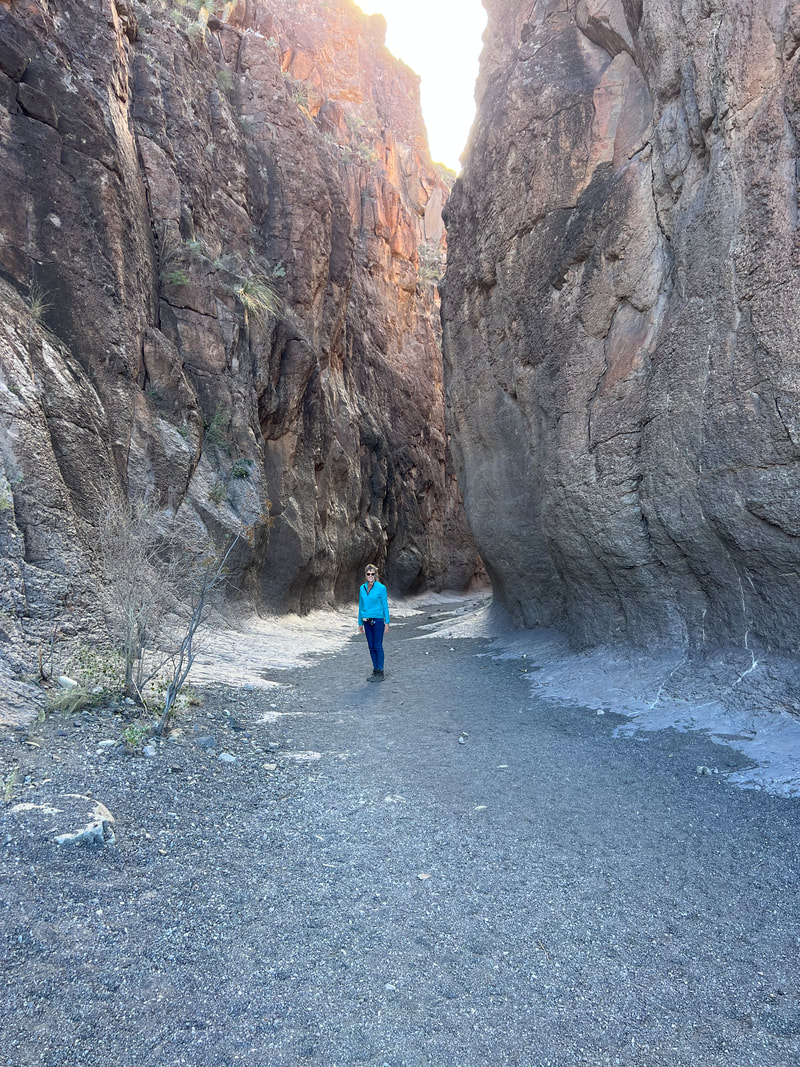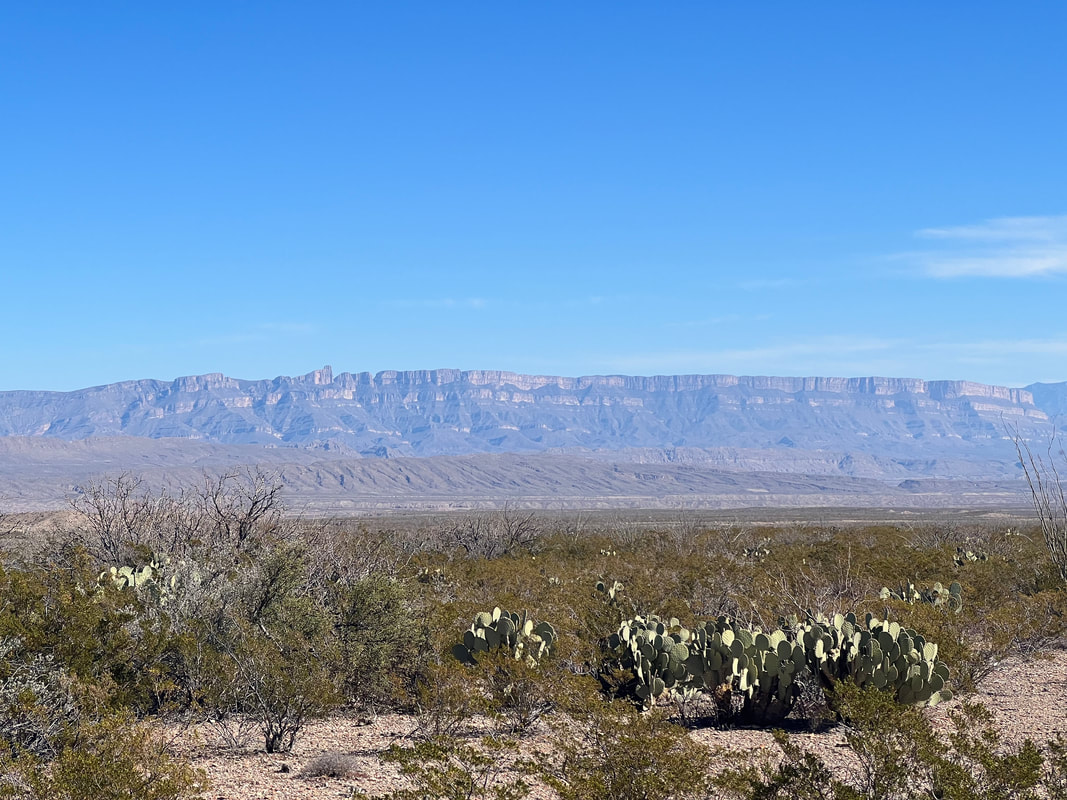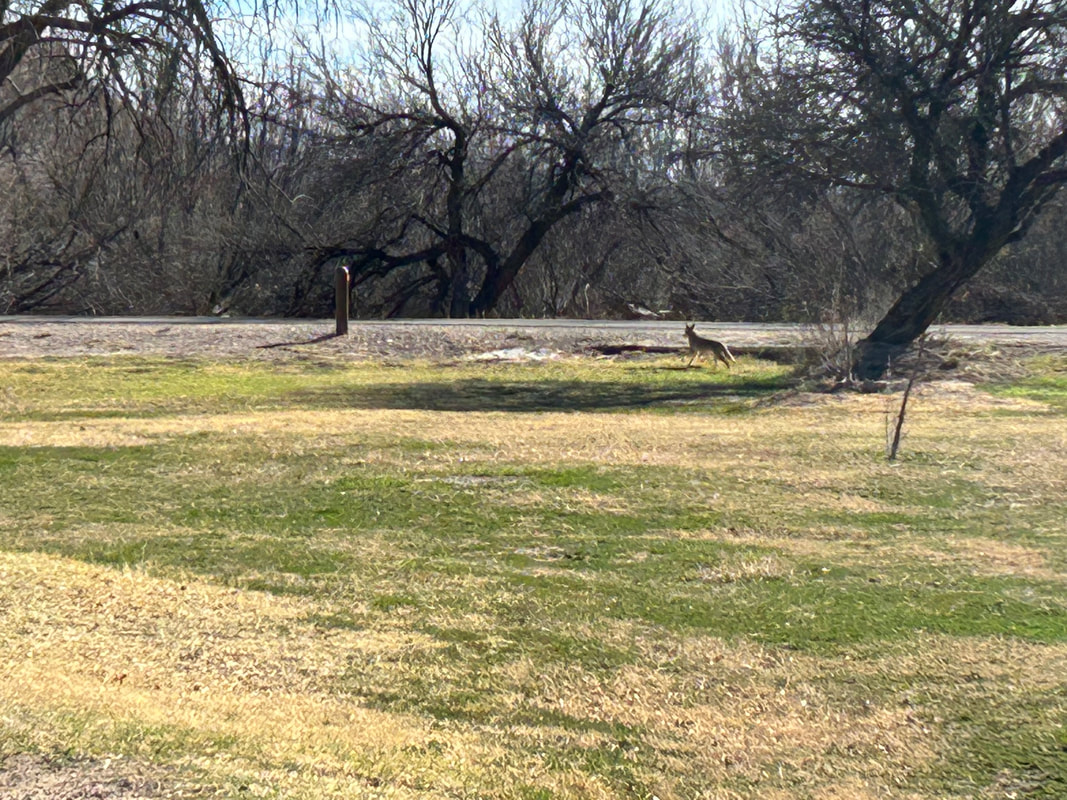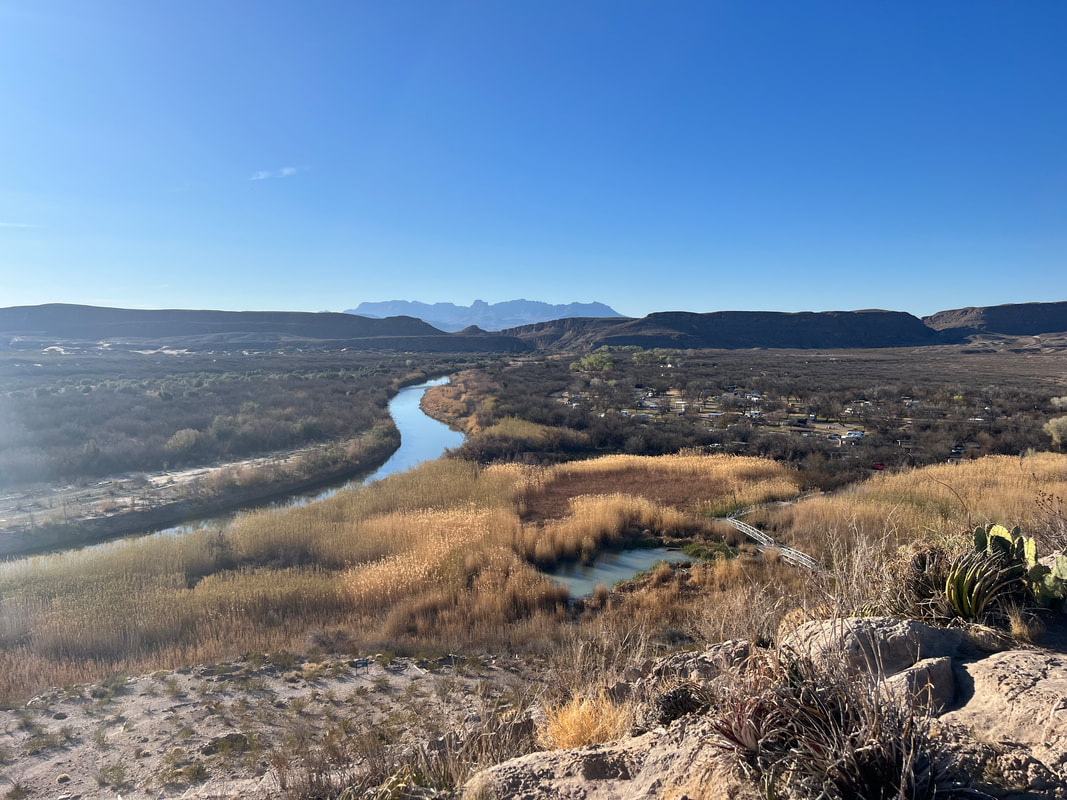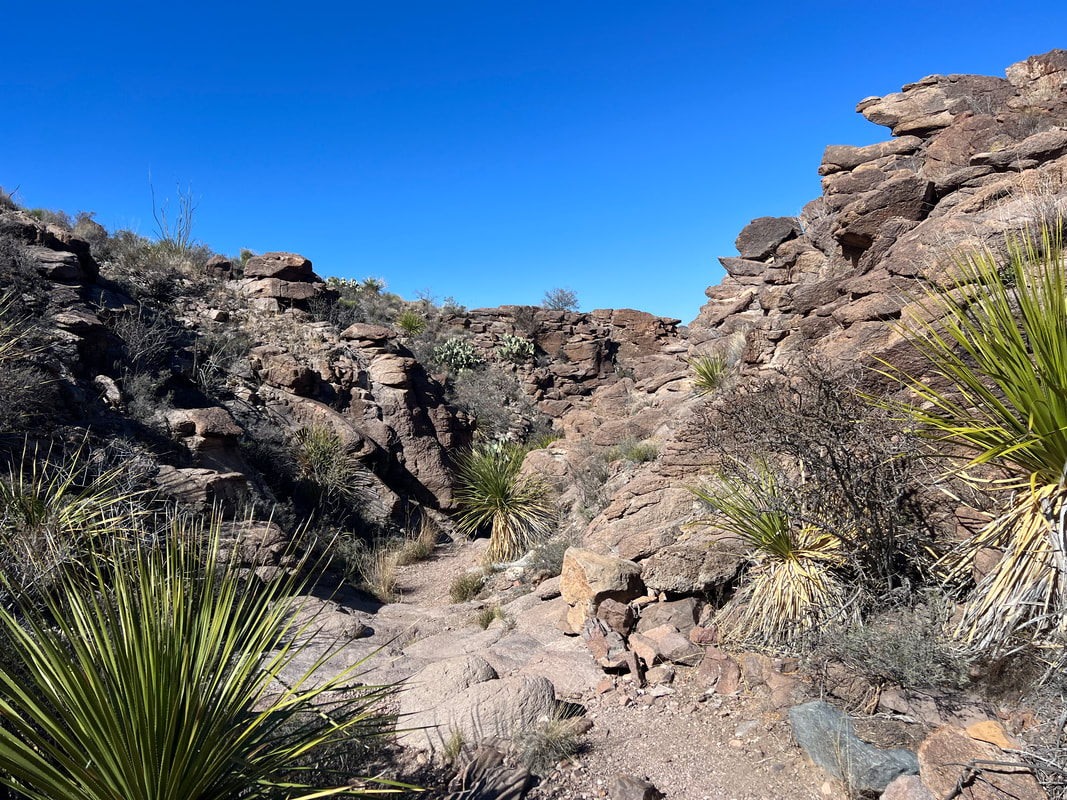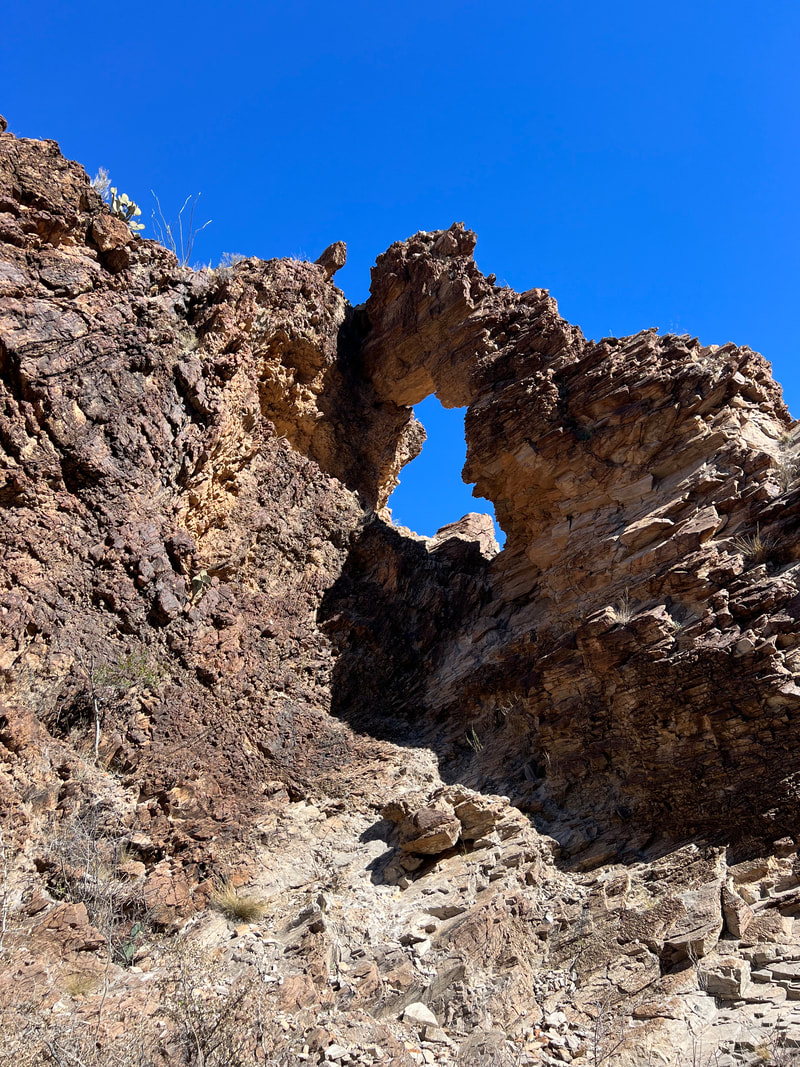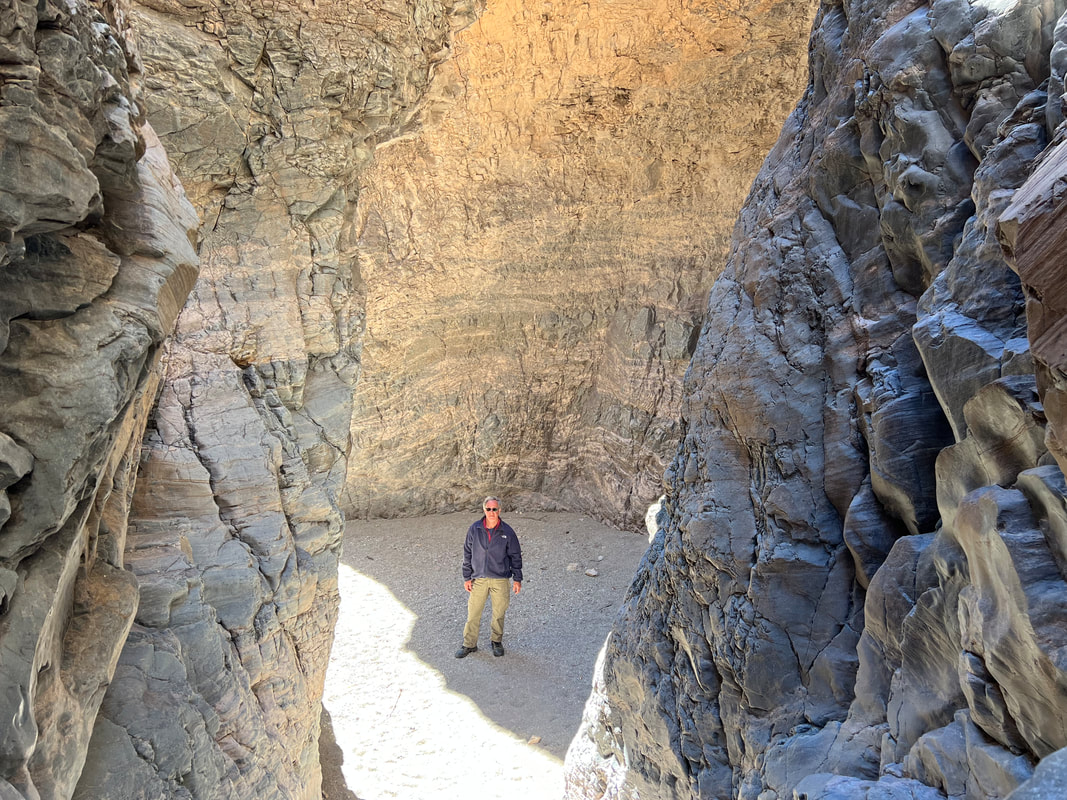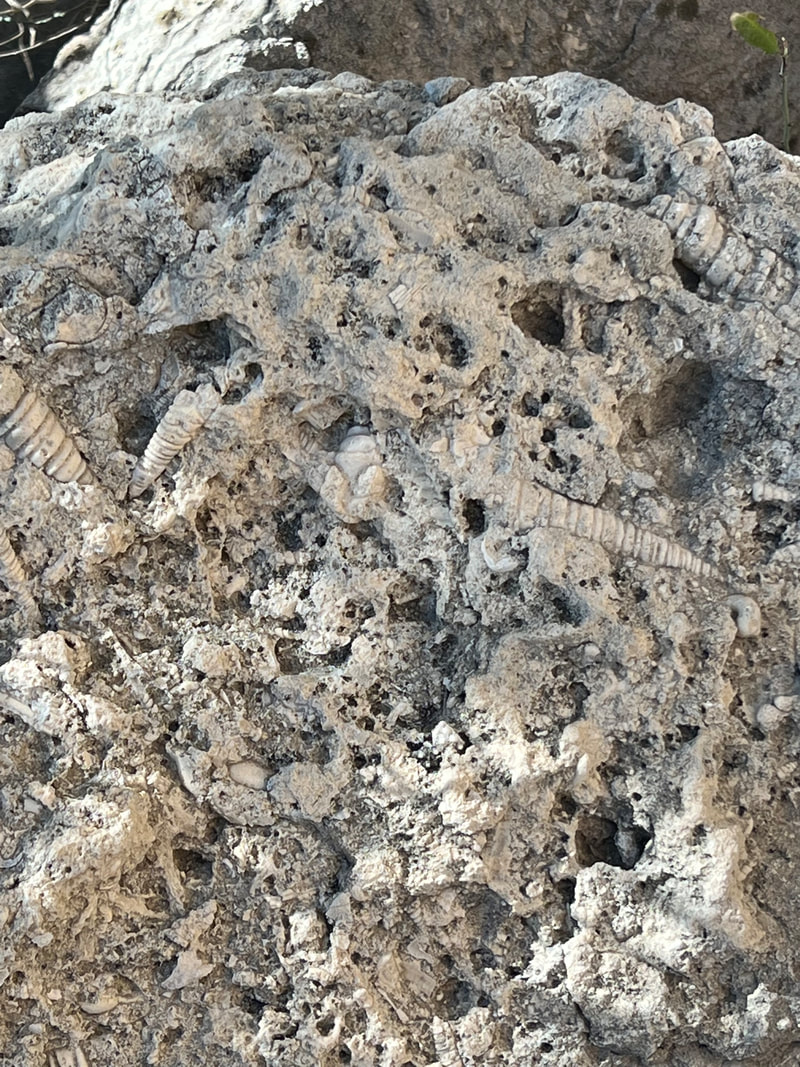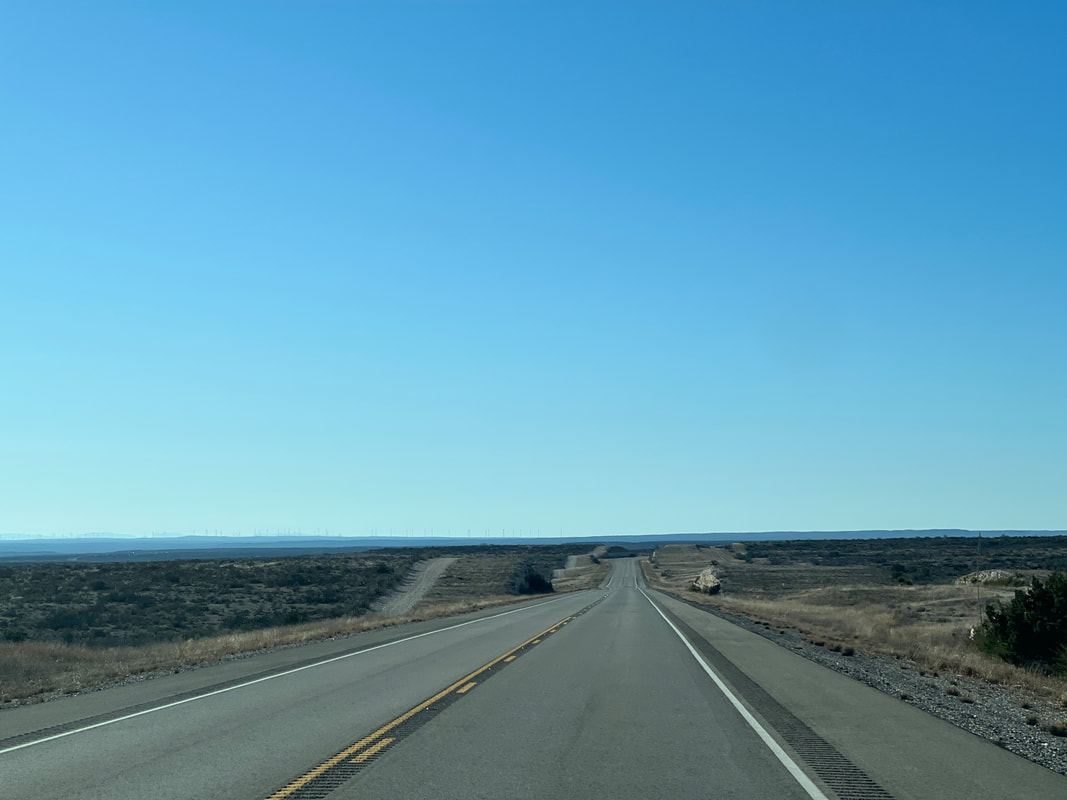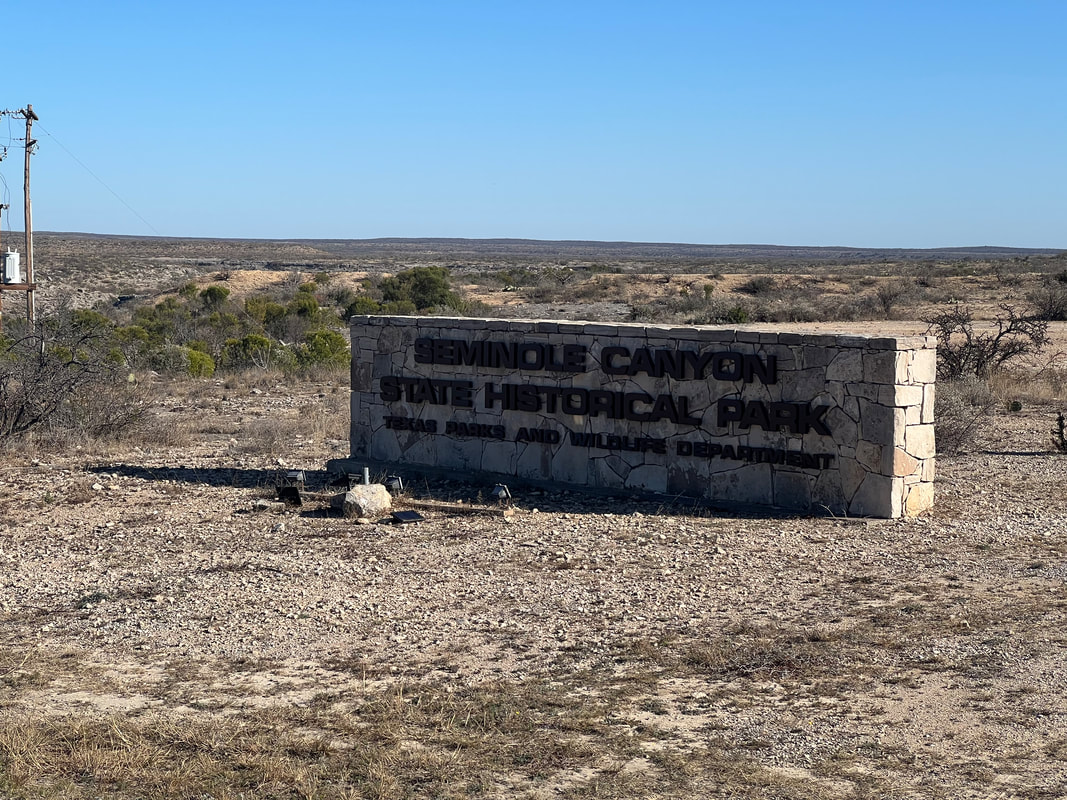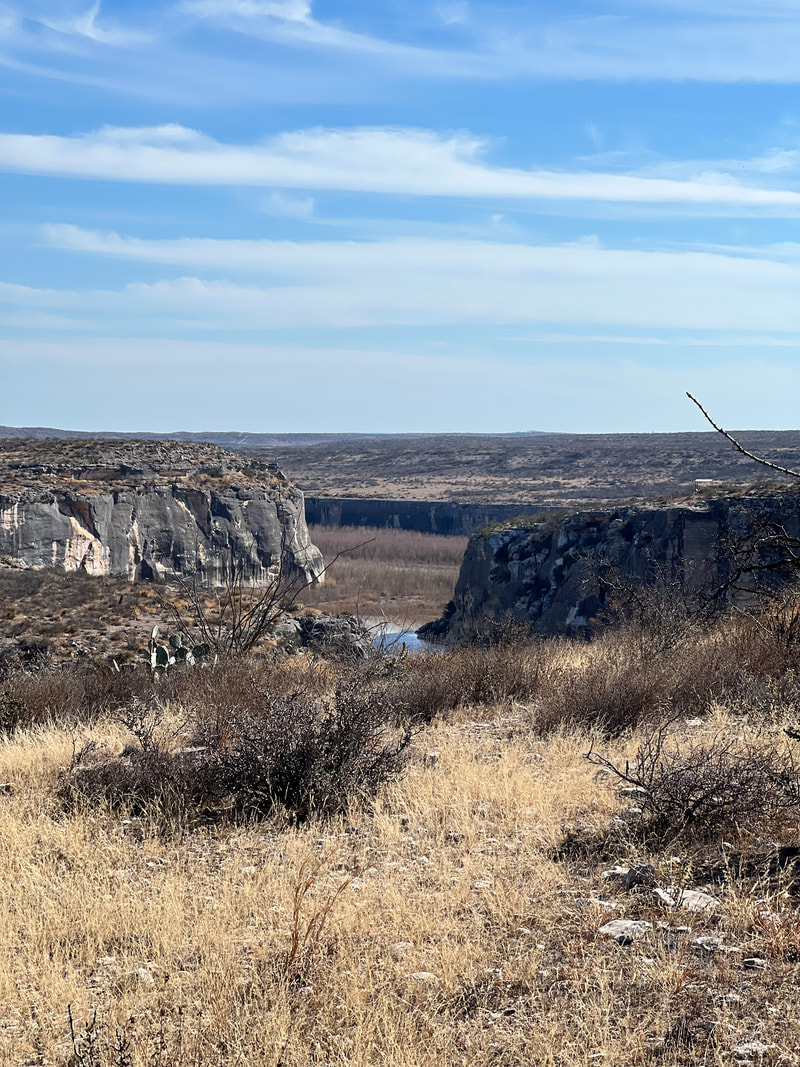After finishing our hike in the National Park and driving out the western gate, we basically followed the river to the BBRSP Visitors’ Center and arrived right around 3PM. The ranger looked like she was used to dealing with confused people, and she pulled out a map and highlighted the La Cuesta camping area, which was about 15 miles farther on the river road. She explained that it was basically a boat launch, but that they had four designated camping spots for RVs, provided the RVs were completely self contained. She told us to pick any empty site, and gave us a receipt to tape to the windshield. Sure enough, La Cuesta was clearly marked, and the campsites were clearly defined by guardrails like you see around curves at the edge of the road. Each corral had a picnic table and a fire ring, and the opening was plenty wide enough to comfortably park a fairly large rig. Unfortunately the whole lot slopes down towards the river, so we had to use all of our boards under the riverside tires to get anywhere close to level, but it turned out to be clear and easy.
We spent the next day exploring the area. Two short nearby hikes allowed dogs, so we did those hikes, as well as a loop hike on a 4WD road. Dogs are allowed anywhere vehicles can go, so we took the dogs on that longer hike as well, which turned out to be a mistake since they all had sore feet from walking 5 miles on the sharp stones. We completely respect the reasons dogs aren’t allowed on most trails at all of the parks in the area, and one of those reasons is that the footing is hard on their feet. We thought they’d be okay on the 4WD track since there isn’t any sharp and pointy vegetation, and it isn’t very hot right now, but even without those factors, they all ended up lame, with Kismet not even wanting to walk outside for a couple of days. A few days later they’re all fine, but we learned a good lesson about taking our jungle dogs into the desert.

Fort Davis and Fort Leaton were connected, although Fort Leaton was run by a series of families through the years, where Fort Davis was a much larger fort run by the military. Many of the buildings that made up the fort are now no more than stone foundations, but there are a few completely refurbished buildings, as well as a few in the process of being repaired. We left our sore-footed dogs in the camper and spent about an hour and a half walking around the grounds, looking at foundations and peering in windows. We were a little worried that we wouldn’t have time to see anything since we hadn’t arrived until 3:30, but the hour and a half turned out to be just about perfect.




